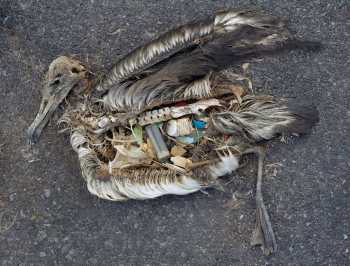Stéphanie Jenouvrier (Biology Department, Woods Hole Oceanographic Institution, USA) and colleagues have published open access in the Journal of Animal Ecology on climate effects on Black-browed Albatrosses Thalassarche melanophris.
The paper’s abstract follows:
“Recent studies unravelled the effect of climate changes on populations through their impact on functional traits and demographic rates in terrestrial and freshwater ecosystems, but such understanding in marine ecosystems remains incomplete.
Here, we evaluate the impact of the combined effects of climate and functional traits on population dynamics of a long‐lived migratory seabird breeding in the southern ocean: the black‐browed albatross (Thalassarche melanophris, BBA). We address the following prospective question: “Of all the changes in the climate and functional traits, which would produce the biggest impact on the BBA population growth rate?”
We develop a structured matrix population model that includes the effect of climate and functional traits on the complete BBA life cycle. A detailed sensitivity analysis is conducted to understand the main pathway by which climate and functional trait changes affect the population growth rate.
The population growth rate of BBA is driven by the combined effects of climate over various seasons and multiple functional traits with carry‐over effects across seasons on demographic processes. Changes in sea surface temperature (SST) during late winter cause the biggest changes in the population growth rate, through their effect on juvenile survival. Adults appeared to respond to changes in winter climate conditions by adapting their migratory schedule rather than by modifying their at‐sea foraging activity. However, the sensitivity of the population growth rate to SST affecting BBA migratory schedule is small. BBA foraging activity during the pre‐breeding period has the biggest impact on population growth rate among functional traits. Finally, changes in SST during the breeding season have little effect on the population growth rate.
These results highlight the importance of early life histories and carry‐over effects of climate and functional traits on demographic rates across multiple seasons in population response to climate change. Robust conclusions about the roles of various phases of the life cycle and functional traits in population response to climate change rely on an understanding of the relationships of traits to demographic rates across the complete life cycle.”

Black-browed Albatross, photograph by Oli Yates
Read a popular article on the paper here.
Reference:
Jenouvrier, S., Desprez, M., Fay, R., Barbraud, C., Weimerskirch, H., Delord. K. & Caswell, H. 2018. Climate change and functional traits affect population dynamics of a long-lived seabird. Journal of Animal Ecology https://doi.org/10.1111/1365-2656.12827.
John Cooper, ACAP Information Officer, 26 June 2018

 English
English  Français
Français  Español
Español 




